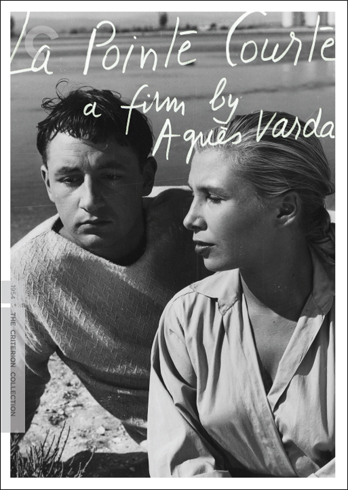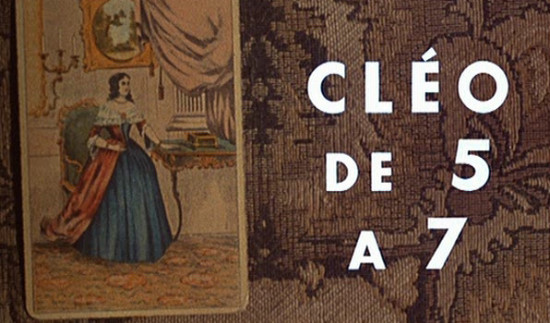French New Wave Cinema in the 1950s and 1960s
There was a period of many 'new waves', but mainly based in Britain and France - where it was most influential,
Influential group of French filmmakers:
- Jean-Luc Goddard
- Francois Truffat
- Claude Chabrol
- Jacques Rivette
- Eric Rohmer
..they were all once film critics and so have backgrounds in film theory and the general framework of a film and what in their opinion works and doesn't and probably a good historical understanding of films and filmmaking.
..All wrote for Cahiers du Cinema
La Pointe Courte (1954) by Agnes Varda is widely believed to be the kickstart of New Wave
The French New Wave and European Art Cinema, post 1960
- Jean-Luc Goddard, Breathless 1960
- The French New Wave: Godard and Francois Truffaut
- Italy in the 1960s, Federico Fellini, Michealangelo Antonioni, Pier Paolo Palosini
- Other countries had prominent figures such as Ingmar Bergman from Sweden
- Luis Bunuel (France and Spain)
The French New Wave (Late 50s - Early 60s)
- Henry Langlois and the Paris Cinemateque
- Andre Bazin and the realist tradition
- Cahiers du Cinema
- From critics to auteurs
- Against the "cinema of quality"
- The discovery of American genre films
- Cinematic, rather than literary values
- Importance of personal expression
- Spontaniety and digression
Film Noir
An example of some filmmaking by Truffaut..
Shoot The Piano Player (1960) You can notice the use of B+W film, even though it's made in the 60s, when colour was available if necessary and the high contrast.
Existentialism
- Phillip Jean Paul Sartre (1905-1980)
- Stressed the individual
- Experience of free choice
- Absence of any rational understanding of universe
- Sense of absurdity in human life
- In indifferent world, existentialist seeks to:
- - Act authentically
- - Use free will
- - Take responsibility for all their actions
- - Avoid playing out roles pre-ordained by society
French New wave: the "look:
- Usually shot on location
- Wide use of handheld lightweight cameras
- Lightweight sound and lighting equipment
- Faster film stocks, less light
- Films shot quickly and cheaply
- Encourages experimentation and improvisation (who doesn't?)
- Casual, natural look
- Available light
- Available sound
Reaction against French films of 1940s (cineme du Papa)
- Against films shot in a studio
- Against films that were set in the past
- Against films that were contrived and over-dramatised
- Against films that used trickery and special effects, much more natural organic feel
- Against 'la tradition de qualite'
La Belle et la bete Jean Cocteau 1946
- The new wave celebrated American film noir because it reflected contemporary urban life
Characters in contemporary dress, speaking in vernacular
Breathless Jean-Luc Goddard (1930-)
- Reinventing film from the ground up
- Basis in American gangster films, but everything is deglamorised
- Location shooting
- Natural light
- Handheld camera
- Jump cuts
- Many 'violations' of continuity editing 'rules', experimentation.
- Jean Seberg: America/France
- Use of digressions and suspensions of action
- Reality of story/reality of film
- Ambiguities of character and of identification and ending
Very kind of smoky aesthetics, everyone used to bloody smoke back then too. Reminds me of Mad Men, which is also set in the 60s.
"In A Lonely Place"1950
Overall goal of French New wave style was to remind audience that they are actually watching a movie. Jump cuts etc.
French New Wave: Mood Shifts
- Heroes are aimless, stylish, act silly
- Also cowardly and amoral
- Mood shifts - infatuation, romanticism, boredom
- Death and betrayal
Breathless - Jean-Luc Godard..
Influence of Godard
- Jump cuts
- Elasticity of time
- Montage, beyond Eisenstein
- Relative independence of sound and image
- Focus on both narration and narrated
- Self-reflexive cinema
- "Reality of images"
Woody Allen & Diane Keaton. Woody Allens moviemaking style is very reminiscent of new wave cinema, with a quirkyness and 'art house' feel to it, focusing more on the characters and locations, rather than a big budget and special effects etc.
Cleo 5 to 7 by Agnes Varda
- Shot for $64,000 and financed by New Wave producers such as Beauregard and Ponti thru their Rome-Paris film company
- Portrait of a singer in Paris in the sixties
Quite interesting in that the filmmakers were almost more important than the film itself, similar to Hitchcock etc. Auteurs/directors
- Essential features of a new wave film contained in Cleo...
- Shot in the day
- Black and white
- 35mm
- Real locations
- Natural light
- Use of real time
Other New Wave Films
- François Truffaut, The 400 Blows
- Alain Resnais, Hiroshima Mon Amour
- Jean-Luc Godard, Breathless
- François Truffaut, Shoot the Piano Player
- 1961
- Jacques Rivette, Paris nous appartient
- Jean-Luc Godard, A Woman Is A Woman
- Alain Resnais, Last Year At Marienbad
- 1962
- François Truffaut, Jules and Jim
- Agnes Varda, Cleo From 5 to 7
- Jean-Luc Godard, My Life To Live
- Ingmar Bergman (Sweden)
- – existential dramas
- – Persona (1966)
- Luis Buñuel (Spain/Mexico)
- – returns to Europe with a refined version of his surrealism
- – Viridiana (1961, shot in Spain)
- – Belle de Jour (1967, France)
- – The Discreet Charm of the Bourgeoisie (1972, France)



.jpg/220px-Humphrey_Bogart_by_Karsh_(Library_and_Archives_Canada).jpg)
















No comments:
Post a Comment